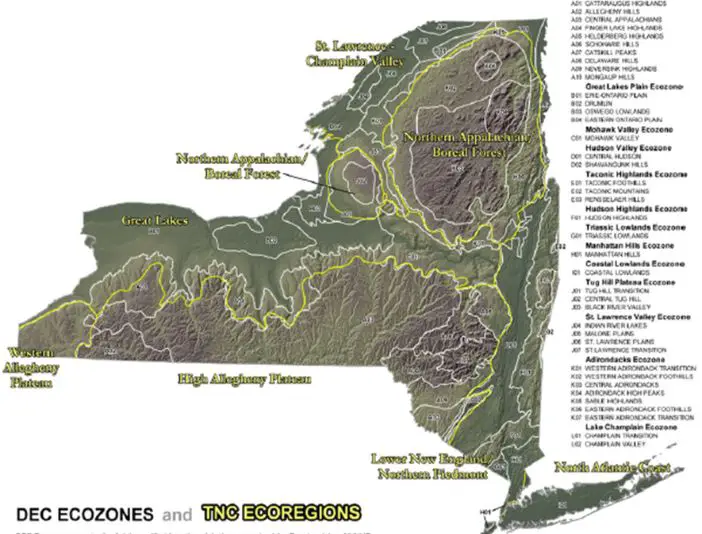New York is a state located in the Northeastern United States.
The agricultural industry plays a significant role in New York’s economy.
The majority of New York’s farmland is located in the upstate region of the state.
The climate in this region is conducive to growing a variety of crops, including corn, soybeans, wheat, apples, and grapes.
Plant Hardiness Zone Map
Before we go ahead, let us see the US Plant Hardiness Zone Map, published in 2012.
Plant Hardiness Zone Map for New York

Climate
New York State experiences a humid continental type of climate with warm and humid summers and cold and wet winters.
The state belongs to zone 3b-7. In summers, temperatures range between 70-85°F in most of the state.
Winter temperatures drop below freezing in the cold north, while they are mild and a few degrees above freezing along the southern part close to the Atlantic coast.
Precipitation
Annual precipitation averages 46 inches across the state, with the highest occurrence of rainfall and snowfall in the Great Lakes region and the lowest in the southwestern parts of the state.
Thunderstorms and tropical cyclones are common in the state of New York.
Soil type: The below map shows the ecoregions located in the state of New York.

Now, let us understand this map more clearly by adding some information on the soil orders of the state.
Soil Order Of New York
| Soil / Sub Order | Location | Characteristics |
|---|---|---|
| Inceptisols/Aquepts and Udepts | Aquepts are found in the northern Appalachian while the Udepts are across the state except the northern Appalachian and the Great Lake. | 1. Aquepts are wet Inceptisols that require artificial drainage due to poor natural drainage. 2. Udepts are mainly freely drained Inceptisols that have a udic or perudic moisture regime. |
| Alfisols/Aqualfs and Udalfs | Aqualfs are found in the St. Lawrence valley region and Udalfs in the Great lakes. | 1. Aqualfs have warm and aquic conditions 2. Udalfs have a udic moisture regime |
| Spodosols/Orthods | In the northern Appalachian region | 1. Orthods are the relatively freely drained Spodosols that have a moderate accumulation of organic carbon in the spodic horizon. |
| Entisols/Arents and Psamments | They are found as small patches in the southern part of the state | 1. Arents do not have diagnostic horizons because they have been deeply mixed by plowing, spading, or other methods of moving by humans. 2. Psamments are sandy soils. |
| Histosols/Saprists | A small amount present across the eastern state boundary | 1. Saprists are the wet Histosols in which the organic materials are well decomposed. |
